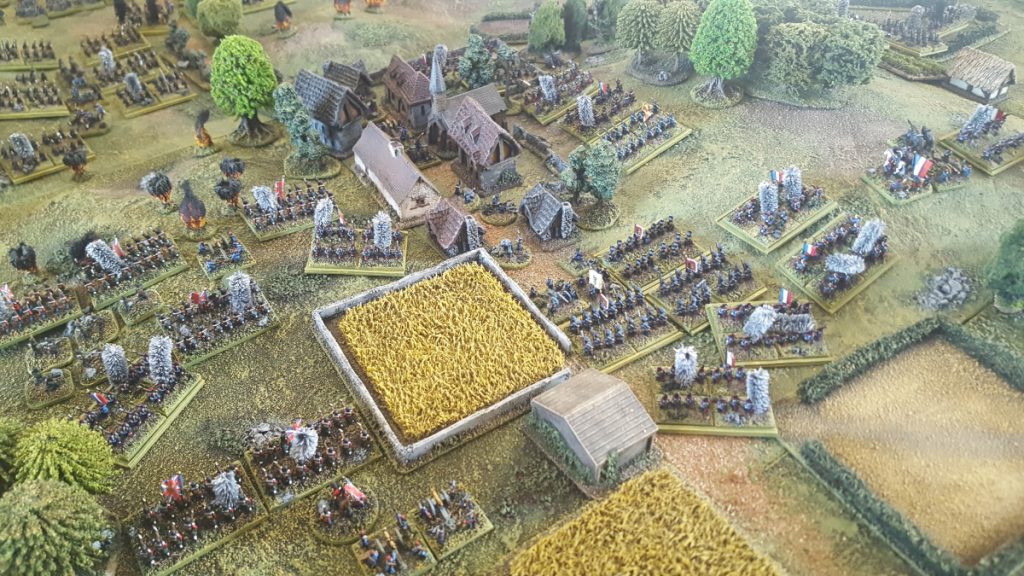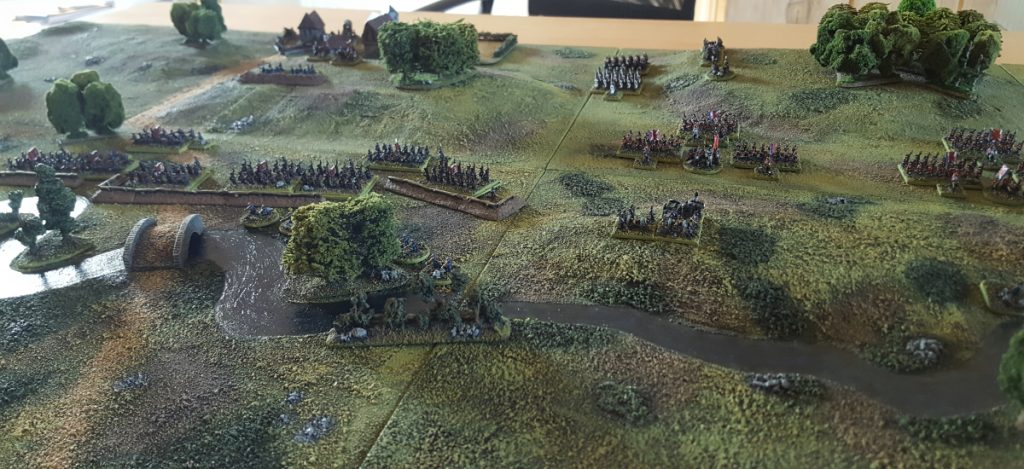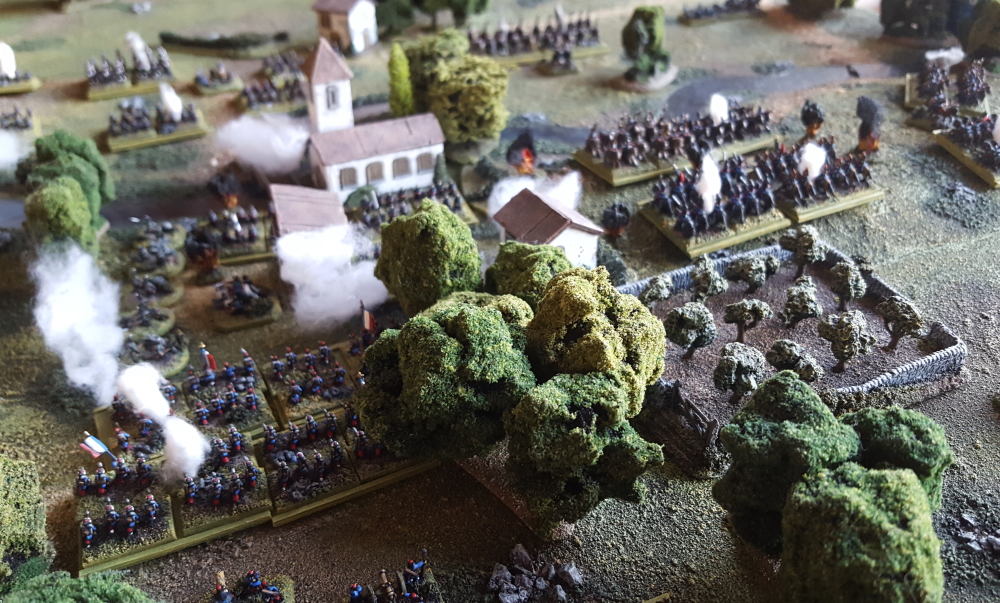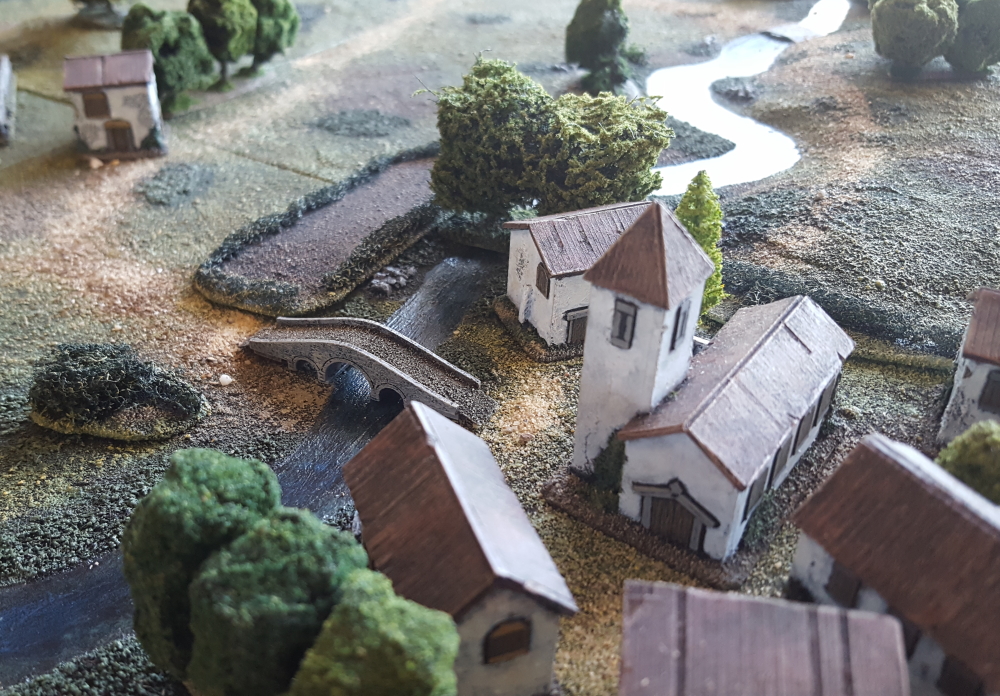Following on from the pre-amble in the last post… with the two armies approaching in column of march, the allies from the south and the Prussians from the north, a head-on clash was inevitable.



Orders of march were established and the first turn saw each side’s lead infantry brigade appear, heading for the town.
Note on rules: As each turn starts, a roll is made for formations due to arrive that turn. On a 2-5 they arrive on time, on a 6 they arrive and get a bonus move (as though they’d arrived earlier than expected), and on a 1 they don’t turn up. They can roll again next turn, but of course it means that plans may be delayed – and of course all formations behind them on the same road are also held up. In this game there were a few 1s rolled, the first being the 2nd Prussian brigade, which left the first arrivals somewhat isolated at the start of the battle.

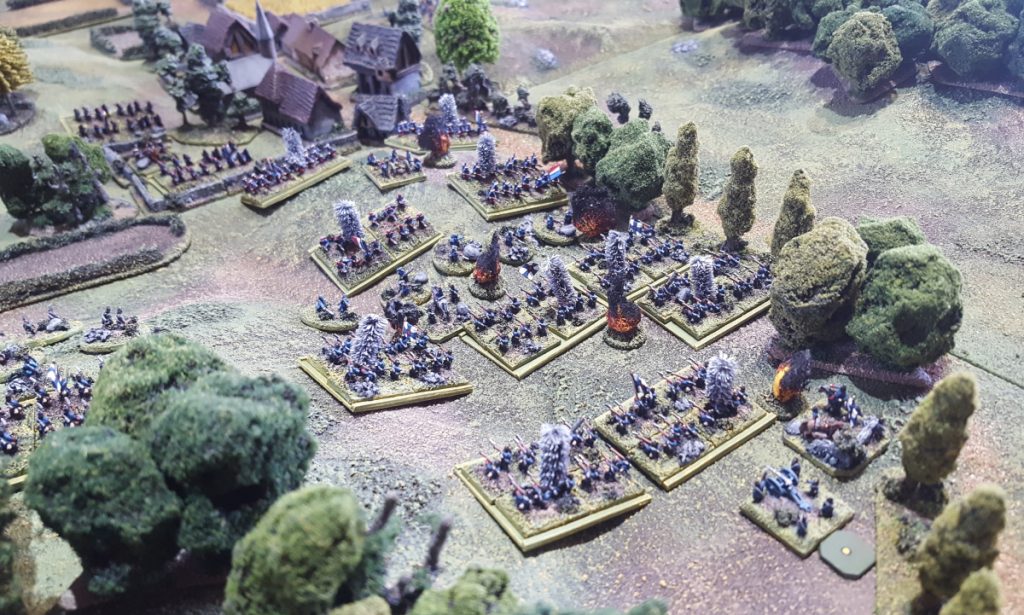

As the battle developed, both sides were anxious for their reinforcements to reach the field. Unfortunately for the allies, the British brigade managed to roll 1 on two consecutive turns and arrived an hour late – resulting in cries of “Perfidious Albion!” from the embattled French!

The difficult terrain presented deployment challenges to both sides, with hills and woods pretty much in all directions as soon as you left the road. Nevertheless, it was possible for fresh troops to make progress and by early afternoon the battle had extended 1-2 km to either flank.
Seeing an opportunity to pin back the allied left flank, the Prussian commander unleashed a cavalry charge down the valley alongside the road. Preceded by horse artillery to draw the enemy’s fire, 4 regiments were ordered to attack the French guns deployed on the low rise to the west of the town. Only 3 managed to assemble in time, the slopes beside the road impeding the cuirassiers’ attempts to form up. Dashing along the valley floor and past their own guns, the Prussian uhlans reached their objective and a desperate struggle took place around the cannon. Both sides showed great courage and stayed in the fight despite growing losses.

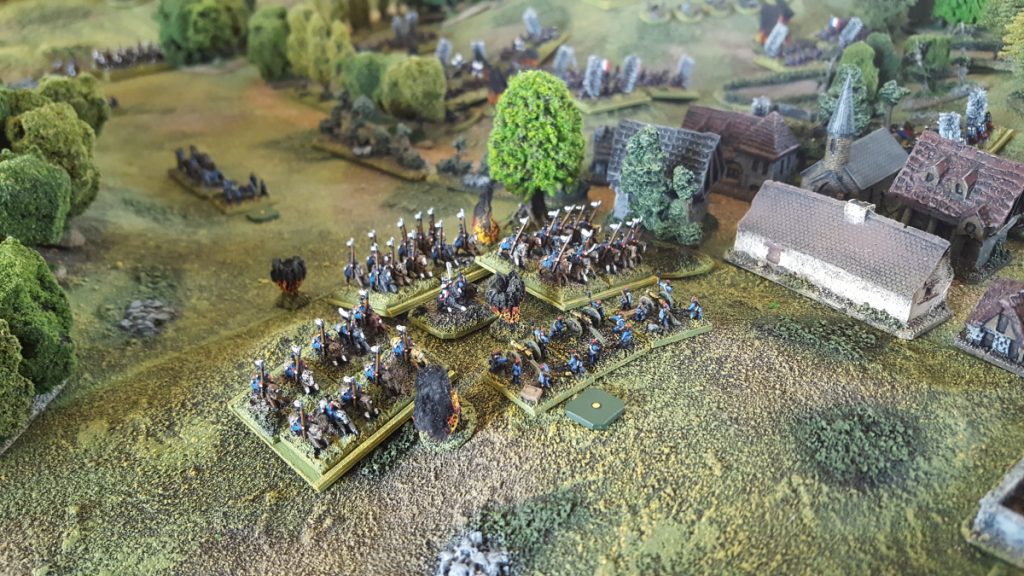

The late-arriving British shook themselves out into fighting formation with admirable speed, and went in with the bayonet. Despite putting up a tough fight, the uhlans were sent packing and the gun line was secured. There was barely enough time to catch their breath before the doughty highlanders came under heavy artillery and infantry fire as the Prussians brought up more troops. Under a rain of fire and, towards the end of the battle, a final Prussian infantry assault, the British losses mounted but they held their ground. The left flank was secure.


Across the field brigades of cavalry stood back in reserve while each side’s infantry tried to gain some advantage among the fields and woods. In the end, despite some successes, the Prussians failed to dislodge the French and Wurttemberg troops. Their Divisional commander was killed leading an uphill charge and his men’s morale faltered. In the centre, the 1st Prussian Division, engaged since the start, eventually crumbled and was driven back the way they’d come, covered by the reserve artillery. Prince Karl ordered a general withdrawal back into the hills.

The allies had won an important victory, their second in 3 days, and a fitting reward for their hard marching. The Prussians would have to think again, both Korps now having recoiled from their attempted invasions. Both armies now had some time to re-group and prepare for the next stage of the campaign.
A few final pics:
